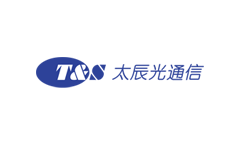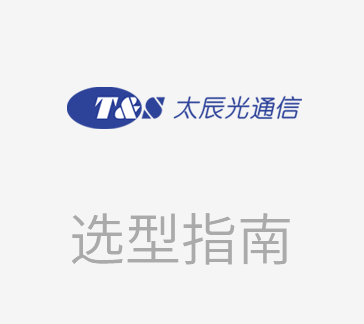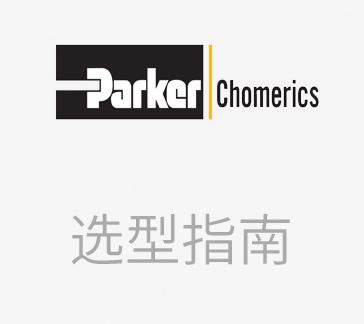What Are the Specific Classification Methods of Fiber Optical Products?




Optical fiber is the abbreviation of optical waveguide fiber. In Fiber Optical communication, fiber optical is usually simplified to Fiber. At present, there are many types of optical communications products, but there are roughly four types of classification methods, namely, classified according to the refractive index distribution of the profile of fiber optical, classified according to the propagation mode, classified according to the working wavelength, and classified according to the type of plastic coating, etc.
1. Fiber optical products are classified according to the refractive index distribution: Step fiber optical and graded fiber optical
Step-index Fiber means that in the fiber core and cladding regions, the refractive index distribution is uniform, and its values are n1 and n2, but at the boundary between the fiber core and the cladding, the change in refractive index is a step. Now, when single-mode fiber optical gradually replaces Multi-mode fiber optical and becomes the mainstream product of current fiber optical, the step-index fiber structure is once again one of the structural forms of single-mode optical fiber.
The so-called graded-index fiber means that the maximum refractive index is at the axis of the fiber optical, which decreases with the increase in the radial direction of the section. The change rule generally conforms to the parabolic law. When the boundary between the fiber core and the cladding is reached, it just drops to the same value as the refractive index of the region; the distribution of the refractive index in the cladding region is uniform.
2. Fiber optical products are classified by propagation mode: Multi-mode fiber optical and single-mode fiber optical
① Multi-mode optical fiber
Multi-mode fiber optical: The central glass core is thick (50 or 62.5μm), which can transmit multiple modes of light. However, the inter-mode dispersion is relatively large, which limits the frequency of the transmission of digital signals, which will become more serious with the increase in distance.
② Single-mode optical fiber
Single-mode fiber: the central glass core is very thin (the core diameter is generally 9 or 10μm), because it only allows one mode to propagate in it, thus avoiding the problem of mode dispersion. Therefore, single-mode fiber optical has an extremely wide bandwidth, which is especially suitable for large-capacity fiber optical communication.
3. Fiber optical products are classified by working wavelength: Short-wavelength fiber optical and Long-wavelength fiber optical
① Short-wavelength fiber
In the early days of the development of fiber optical communications, the wavelength of light waves used by people was in the range of 0.6 to 0.9 microns (the typical value is 0.85 microns). It is customary to call fiber optical products that exhibit low attenuation in this wavelength range as Short-wavelength fiber optical. Short-wavelength fiber optical is an early product and is rarely used at present.
② Long-wavelength fiber
With the continuous deepening of research work, it was found that the attenuation of the quartz fiber optical dropped sharply near the wavelengths of 1.31 microns and 1.55 microns. Not only that but also the material dispersion of the silica fiber optical in this wavelength range is greatly reduced. Therefore, people’s research work has shifted rapidly, and a fiber optical product in this range has been developed, which is called long-wavelength fiber optical. Long-wavelength fiber optical is especially suitable for long-distance, large-capacity fiber optical communication because of its low attenuation and wide bandwidth.
4. Fiber optical products are classified according to the type of plastic coating: Tight-buffered fiber optical and Loose-buffered fiber optical
① Tight-buffered fiber
The so-called tight-buffered optical fiber refers to the fiber in which the secondary and tertiary coating layer and the pre-coating layer and the core and cladding of the fiber are tightly combined. At present, this type of fiber optical is used most.
The attenuation-temperature characteristics of uncoated fiber optical are very good, but its temperature characteristics decrease after coating. This is because the expansion coefficient of the coating material is much higher than that of quartz, and it shrinks more severely at low temperatures, compressing the fiber optical to bend slightly, and increasing the attenuation of the fiber.
② Loose-buffered fiber
The so-called loose-buffered optical fiber means that the pre-coated fiber is loosely placed in a plastic tube, and no secondary or tertiary coating is carried out.
The manufacturing process of loose-buffered fiber optical is simple, and it's attenuation-temperature characteristics and mechanical properties are better than those of tight-buffered fiber, so more and more people pay attention to it.
- |
- +1 赞 0
- 收藏
- 评论 0
本文由出山转载自T&S News,原文标题为:What Are the Specific Classification Methods of Fiber Optical Products?,本站所有转载文章系出于传递更多信息之目的,且明确注明来源,不希望被转载的媒体或个人可与我们联系,我们将立即进行删除处理。
相关推荐
Introduction of the Fiber Loss Budget Standard
According to the TIA-568 standard, the transmission attenuation of 850nm over OM4 fiber is 3.5 dB/km. Based on the distance of the link, we can calculate the standard loss of 0.4dB.
Reliability Testing of COTS Fibre Optic Transceivers
With a dedicated design associated with critical circuit adjustments, COTS optical fiber transceivers can meet space applications requirements and are thus ready for short term deployment in large bandwidth communication satellites.
What is WDM?
Wavelength Division Multiplexing (WDM) is a technique in fiber optic transmission for using multiple light wavelengths to send data over the same medium. Two or more frequencies of light can travel along one fiber, and multiple signals transmit in an optical waveguide at different wavelengths.
太辰光(T&S)光纤连接器选型指南
目录- 公司简介 Company profile 陶瓷插芯 Ceramic Ferrule 光纤连接器 Fiber Optic Cable Assembly 光纤元器件 Fiber Optic Components 波分复用器 WDM FBT光纤耦合器 FBT Coupler PLC分路器 PLC Splitter 光纤光栅 Fiber Bragg Grating 光纤模块、有源光缆及有源电缆 Fiber Optic Transceivers,AOC&DAC
型号- FOT-SC/APC,CG-XX/G652D/1.5M,D12F-SC/UPC/SM/∅0.9/L/L1M,SMC-P-1X2-163/15-10/90-FC/APC-1-G652D-∅3X60,FEN-SC-S4,FEN-SC-S5,MC-FC/APC-FC/UPC/SM/∅3/L,FEN-SC-S1,PM-FC/UPC(N)-FC/UPC(N)/1550/∅2/L-SA,FEN-SC-S2,FEN-SC-S3,ATIL-FC/APC/SM/05/NP/L,MPO/APC/12F-FC/UPC/SM/∅0.9-L/L1-RJ,PLC-1X8-A-09/L1-LC/UPC-09/L2-LC/UPC
Firecomms(飞尔康)Optolock®无插拔光纤收发器/LC端接光纤连接器/RedLink®收发器/电缆&连接器选型指南
目录- Optic transceivers and cable connector
型号- HFBR-1521ETZ,FR01MHIR,FT50MVNR,HFBR-2528,HFBR-1532,HFBR-2522,FR10MVIR,HFBR-1531,HFBR-2521,FB1M2LPR,FB1M2KPR,FR50MHNR,FT10MHLR,FB00AKAR,AFBR-1529,FR01MVIR,FT10MHNR,HFBR-1534,HFBR-2524,AFBR-2624,EDL301T-XX,IDL300T-XXX,FT05MVNR,FR10MHIR,HFBR-1521Z,FT10MVNR,AFBR-5972Z,FB2M5LVR,FR05MHIR,FR50MVNR,FB2M5KVR,FT10MVLR,FT50MHNR,FT01MVNR,HFBR-1528,EDL300T-XXX,FT05MHNR,HFBR-1522,HFBR-2534,HFBR-1521,FR05MVIR,HFBR-2532,HFBR-2531,FT01MVNG,HFBR-1524,FT01MHNR,AFBR-1624,FT01MHNG
TSQM4-NCNGE3C光端机单模40GBase收发器,带诊断监控双工QSFP+PSM4 10km收发器
描述- 本资料介绍了一种四通道全双工光收发器模块,适用于InfiniBand QDR/DDR/SDR、10G/8G/4G/2G光纤通道、PCIe和SAS应用。该模块提供4个独立的发送和接收通道,每个通道可达到11.2Gbps的传输速率,总数据率为40Gbps,使用单模光纤可传输10km。模块具有低功耗、热插拔QSFP形式因素、内置数字诊断功能等特点。
型号- TSQM4-NCNGE3C
TSQS-851HG-XXXC 100G QSFP28有源光缆
描述- 本资料介绍了TSQS-851HG-XXXX型号的四通道全双工主动光缆(AOC),适用于100G以太网和InfiniBand FDR/EDR应用。该产品符合IEEE 802.3bm标准,采用QSFP28接口,支持多模光纤系统,具有低功耗、宽工作温度范围等特点。
型号- TSQS-851HG-XXXC
Parker Chomerics(派克固美丽)Tecknit EMI 屏蔽材料选型指南
目录- Company Profile and Products introduction Electromagnetic Compatibility Overview EMI SHIELDING DESIGN Special Applications Knitted Wire Mesh Metal Fibers and Screens Oriented Wires Conductive Elastomer EMI Shielding Windows Air Vent Panels Conductive Systems Products Shielding Components Beryllium Copper Gaskets Fabric-over-Foam Gaskets EMI Shielding Products Glossary and Appendix
型号- 82-12916,21-13910,82-12911,21-13911,21-13912,60-02010,21-13913,60-02011,21-13914,60-02012,21-13915,60-02013,21-13916,60-02014,21-13917,60-02015,21-13918,60-02005,88-12342,60-02006,60-02007,60-02008,60-02009,48-00476,43-46210,88-12347,21-13900,82-12921,21-13901,XX-X1500,21-13902,60-02002,60-02003,60-02004,21-13907,XX-X1506,21-13908,XX-X1505,21-13909,XX-X1508,XX-X1507,XX-X1502,XX-X1501,XX-X1504,XX-X1503,48-00481,88-12337,73-00081,XX-X1509,60-02030,21-13933,60-02031,21-13934,60-02032,21-13935,60-02033,43-13794,60-02027,60-71043,60-02028,60-71044,60-02029,88-12362,60-71042,60-71047,60-71048,60-71045,60-71046,86-10094,89-50010,43-43162,86-10093,89-50012,86-10090,89-50014,86-10092,89-50016,86-10091,86-10076,84-70079,86-10075,89-7XXXX,21-13920,86-10077,84-70076,84-70075,60-02020,84-70078,60-02021,84-70077,60-02022,84-70072,60-02023,84-70071,60-02024,84-70074,60-02025,84-70073,60-02026,88-12352,60-02016,43-46208,60-02017,60-02018,43-46206,60-02019,88-12357,89-50020,89-50021,86-10082,89-50022,43-00003,89-50023,43-43175,89-50024,43-43178,72-08116,89-50025,43-00000,89-50026,89-50027,86-10080,73-00025,60-02052,60-02053,43-13335,60-02054,43-13334,60-02055,88-12392,60-02056,60-02057,60-02058,60-02059,84-70070,89-50070,89-50072,89-50074,CS 9,CS 8,89-50076,89-50078,CS 3,CS 2,CS 1,43-00030,88-12372,600,601,602,603,604,605,606,607,43-00021,608,43-00020,609,43-00041,43-00040,60-02070,73-00008,60-02071,60-02072,60-02073,60-02074,60-02075,60-02076,XX-X1511,60-02077,XX-X1510,60-02078,60-02079,83-30184,XX-X1517,XX-X1516,83-30182,XX-X1519,83-30183,XX-X1518,83-30180,XX-X1513,83-30181,XX-X1512,610,XX-X1515,611,XX-X1514,612,613,614,615,616,617,618,619,60-02060,60-02061,60-02062,60-02063,XX-X1520,60-02064,60-02065,XX-X1522,60-02066,XX-X1521,60-02067,60-02068,60-02069,88-12397,620,XX-X1523,621,622,83-30190,623,624,625,626,627,628,629,43-00042,62250,62252,84-70025,86-10021,FS2,84-70024,FS1,84-70027,84-70026,86-10022,5X-72100,84-70021,FS6,84-70020,FS5,84-70023,84-70022,20-X0107,20-X0104,20-X0105,20-X0102,630,631,20-X0101,632,633,82-12086,634,635,636,79-10138,637,79-10139,638,79-10136,639,79-10137,43-46610,79-10135,84-70017,86-10016,86-10015,60-02080,84-70014,60-02081,84-70013,60-02082,84-70016,86-10012,60-02083,84-70015,86-10011,84-70010,84-70012,84-70011,20-X0119,20-X0117,20-X0118,20-X0116,20-X0113,640,20-X0114,641,20-X0111,82-12096,642,20-X0112,643,644,20-X0110,645,646,82-12091,647,648,649,84-70007,86-10003,84-70006,86-10002,86-10005,86-10004,84-70003,84-70002,84-70005,86-10001,84-70004,86-10000,5X52000,84-70001,84-70000,86-10007,86-10006,86-10008,650,651,652,653,654,655,656,657,82-12061,43-13707,79-10143,79-10144,661,662,79-10142,5X-64500,663,664,43-46608,79-10140,43-46606,79-10147,79-10148,79-10146,86-10069,86-10068,XX-X1136,82-12046,82-12041,88-12302,43-43142,89-5XXXX,88-12307,XX-X1140,5X-71200,43-43161,XX-X1148,XX-X1144,82-12056,201,202,82-12051,203,204,205,86-10061,206,207,208,86-10062,209,86-10042,XX-X1114,XX-X1110,210,211,212,79-10194,XX-X1116,213,214,82-12021,79-10192,XX-X1118,215,88-12322,79-10193,216,217,218,219,43-43123,5X-53800,86-10032,42252,86-10031,43-13746,XX-X1124,82-12026,XX-X1120,220,221,222,223,224,XX-X1128,225,226,227,228,88-12317,229,86-10041,42250,230,231,43-43984,232,43-43987,233,43-43986,234,235,236,237,238,239,43-43981,5X-55600,43-43980,43-43983,56-74000,5X-52100,82-12126,240,69-10001CSP,56-74016,82-12131,69-10031A,82-12101,69-10030A,5052,82-12106,43-43974,43-43975,43-43978,43-43977,43-43972,43-43971,89-70122,89-70123,42-X1700,89-70124,89-70120,89-70121,42-X1709,5X-61000,42-X1706,42-X1705,42-X1708,42-X1707,42-X1702,42-X1701,42-X1704,42-X1703,89-70111,89-70112,89-70113,89-70114,89-70110,5X-66700,89-0111B,89-70100,89-70101,89-70102,89-70103,5X-53400,89-70104,83-30153,83-30154,43-13262,43-13261,43-16764,60-70211,60-70212,60-70210,60-70215,5X-55200,60-70216,5X-65000,60-70213,60-70214,60-70219,60-70217,60-70218,89-70152,89-70153,89-70154,43-13245,88-12297,83-30173,83-30174,83-30171,83-30172,60-70222,83-30170,60-70223,60-70220,60-70221,89-70144,89-70141,89-70142,89-70143,5X-61900,82-12973,83-30133,43-16792,82-12972,83-30134,83-30131,43-16310,82-12974,83-30132,83-30141,43-16304,43-16306,43-16308,89-70133,89-70134,89-70130,89-70131,43-13268,83-30144,83-30142,83-30143,83-30152,72-00236,82-55604,82-55603,21-13950,21-13951,21-13953,83-30113,82-55609,82-12956,83-30114,83-30111,83-30112,82-55606,83-30110,45-09810,45-09811,45-09812,45-09813,89-50110,89-50111,89-50112,89-50113,89-50114,82-55615,82-55612,21-13940,21-13941,21-13942,21-13943,82-12966,21-13944,21-13945,83-30124,21-13946,21-13947,83-30122,21-13948,82-55618,82-12961,83-30123,21-13949,83-30120,83-30121,43-16795,43-16796,83-30130,43-16797,43-16799,89-50120,89-50121,89-50122,89-50123,89-50124,82-55625,89-70184,82-12936,89-70181,89-70182,89-70183,89-70173,89-70174,83-30104,82-12946,83-30102,89-70171,83-30103,89-70172,83-30100,83-30101,82-12941,60-70200,60-70201,60-70204,60-70205,89-50100,60-70202,89-50101,60-70203,89-50102,60-70208,89-50103,60-70209,89-50104,60-70206,
TSQM4-NCNGD3C光端机单模40GBASE收发器,带诊断监控双工QSFP+PSM4 2KM收发器
描述- 该资料介绍了一种四通道全双工光模块,适用于InfiniBand QDR/DDR/SDR、10G/8G/4G/2G光纤通道、PCIe和SAS应用。该模块提供4个独立的发送和接收通道,每个通道的数据传输速率可达11.2Gbps,总数据率为40Gbps,使用单模光纤可传输2公里。模块具有低功耗、热插拔QSFP形式因子、内置数字诊断功能等特点。
型号- TSQM4-NCNGD3C
电信
描述- ZTT Telecom成立于1992年,专注于光纤通信领域,并于2002年上市。公司业务涵盖海洋设备、可再生能源、新材料、智能电网、光纤通信等多个领域。ZTT致力于清洁生产和低碳发展,积极推动国家碳达峰和碳中和目标。公司提供光纤预制棒、光纤、特种通信电缆、混合电缆、射频同轴电缆、天线、光收发器、数据中心等产品和解决方案,服务于电信基础设施网络建设。ZTT在全球市场拥有广泛的业务和分支机构,并积极参与社会责任活动。
型号- GF03-BG1H48FC,ZE140W,GXF01-HB96-1,GPX03-840Y2,GF03-BSC16SC,BPX01-600K1200S1,ZE140C,ZE140P,ZE2000,GJS3020,GJS2030,ZG140P,GJS1020,ZG140W,JPX01-600K600S2,ZE140CW,GF03-BG108SC,ZG140C,ZG140,ZE140,ZG140CW,ZG2100,DPF01-48V400A,QSFP-DD,GJS1029
TSSLS-NFNCK8C光端机1550nm SFP+单模收发器,带诊断监控双工SFP+80km收发器
描述- 本资料介绍了一款1550nm单模SFP+光收发器,适用于10Gbps传输速率,支持80km光纤距离。该产品符合SFF-8472标准,具备高灵敏度APD光电二极管和TIA,支持数字监控功能,适用于10GBASE-ZR/ZW和10G Fiber Channel等应用。
型号- TSSLS-NFNCK8C
TSSP-8525G-XXXC 25G SFP28有源光缆
描述- 该资料介绍了TSSP-8525G-xxxx型号的25GSFP28 Active Optical Cable。这是一种直接连接的光纤组件,具有SFP28连接器,适用于短距离连接,特别适合机架内和相邻机架之间的连接。它支持高达25.78 Gbps的数据速率,并符合SFP28 MSA和IEEE 802.3by 25GBASE-SR标准。
型号- TSSP-8525G-XXXT,TSSP-8525G-XXXC
TSSLS-DXXCK8C光端机DWDM SFP+单模收发器,带诊断监控双工SFP+80KM收发器
描述- 本资料介绍了一种10Gbps SFP+单模光纤收发器,适用于80公里距离的数据传输。该收发器符合SFP+ MSA标准,具备高数据速率、低功耗、宽工作温度范围等特点,适用于10GBASE-ZR/ZW、10G Fiber Channel等应用。
型号- TSSLS-DXXCK8C
TSPA-85192-XXXC 10G SFP+有源光缆
描述- 该资料介绍了TSPA-85192-xxxx型号的10G SFP+ Active Optical Cable。这是一种直接连接的光纤组件,具有SFP+连接器,适用于短距离连接,特别适合机架内和相邻机架之间的连接。它支持高达10.3125 Gbps的数据速率,并可在多模光纤系统上运行。
型号- TSPA-85192-XXXC
电子商城
品牌:ROGERS
品类:PTFE/Woven Fiberglass Laminates
价格:¥16,030.1502
现货: 201
现货市场



































































































































































































登录 | 立即注册
提交评论